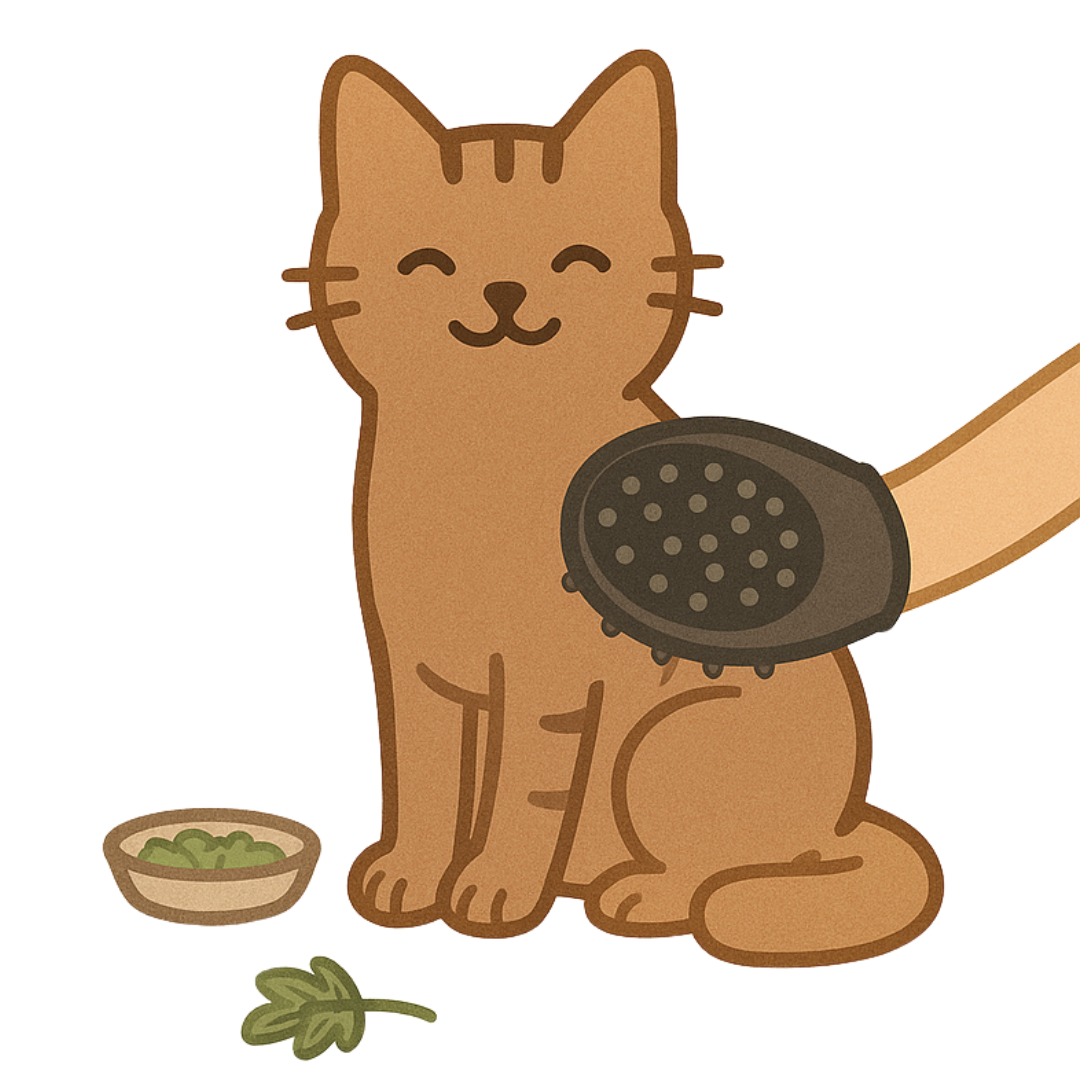Tips from two tiny cats and their human, because raising cats isn’t always as simple as food, naps, repeat. Sharing what we’ve learned raising Cricket & Coconut, from grooming routines to stroller strolls and everything in between, these are the real-life tips, tricks, and routines used. If it helped us, it’s here, because every pet parent deserves a little backup.
Tip & Tricks for Pet Parents
How to Leash & Harness Train Your Cats 🐾
*Spoiler: It’s not as hard as people think… if you go at their pace.
Let’s break it down:
Choose the right harness: soft, lightweight, with a snug chest fit (you don’t want them to wriggle out and escape, but you also want them to be able to breathe easily).
Let them wear it indoors first: for a few minutes at a time, with some yummy treats or licky sticks for positive reinforcement every 15-30 seconds.
Reward stillness, not resistance: the goal is neutral, not instantly chill. They will probably walk around as if it’s their first time ever using their legs 😆.
Add the leash, let them drag it: supervised only, just so they become aware of it, and it just becomes part of the background.
Start with indoor leash walks: let them lead, offer gentle redirection.
Only go outside when they’re ready and curious to explore: it should be their idea. Leave the back or front door open for them to be curious about the outside world. Watch them be interested and then lead the way with them!
Cricket adjusted to her harness within 5 minutes (she was ready to GO!). Coconut, on the other hand, of course, took a little longer, as did getting used to being outside, all while cricket ran to climb a tree.
Building a Grooming Routine from Kittenhood 🧼
Cricket and Coconut might be ‘siblings’ in spirit (and even the same breed), but when it comes to grooming? Completely different needs.
They started getting brushed, bathed, nail trimmings, and teeth cleanings, in kittenhood… not because they absolutely needed it, but so it would never feel like a dramatic thing later. It truly made all the difference.
Cricket: Short Fur, Heavy Undercoat
Don’t be fooled by her sleek teddy bear appearance, Cricket has a wildly dense undercoat. In fact, she needs brushing way more frequently than Coconut to keep from shedding tumbleweeds across every surface.
What works for her:
🖐️ A firm-but-gentle rubber grooming mitt to lift loose fur
🧴 Occasional use of a deshedding spray or shampoo
🪮 SleekEZ Brush 2–3x a week^We tried 4 brushes before
finding this god-send.
When we groom:
Preferably outside on the deck after breakfast or dinner. She’s calm, cozy, and open to attention, and of course, distracted by the birds.
Coconut: Long Cotton-like Hair, Low Shed, Prone to Mats
Coconut doesn’t shed nearly as much, but his soft, cottony coat tangles, especially right underneath his chinny chin chin. He’s more prone to matting, especially around his armpits, undercarriage, and behind the ears so being aware and doing daily checks in those areas helps manage any possible matting.
What works for him:
🪮 A metal rake brush for weekly gentle detangling
✂️ Rounded scissors for mat emergenciesWhen we groom:
Coconut loves the brush. What he doesn’t love though is the bath. So for bath time, we prep the bath by laying down a towel at the bottom of the tub, pre-filling with warm water only an inch or so, and making sure to have lots of licky stick treats ready to use during his shampooing and rinsing. From there he will get towel and air dried, then brushed once he is 80% dry, and he’s fully fabulous again!
What Made It Easier for Both?
Starting early even before they needed it. From touching their little toe beans and letting them get used to that feeling while growing trust between us, to being able to open their mouth to look at their teeth. It’s all about trust and comfortability with these routines.
Used positive reinforcements, aka treats. And never force the brushing, clipping, or bathing unless in an extreme circumstance.
Let them explore the tools (and tub) first, leave the brushes, nail clippers, etc. around your space, maybe even sprinkle a little catnip over them (or in the tub!), it helps immensely.
Grooming now is just part of their life. It’s a quick moment of care and bonding (sometimes a workout, tbh). But it doesn’t feel like a battle, because it didn’t start as one.
🤹🏼 How to Train Your Cat to Do Tricks
That’s right, cats can indeed learn tricks.
The Basics:
One trick at a time: start slow. Whether it’s “sit,” “come,” “up,” “paw,” “roll over,” really, whatever you want- just stick to learning one at a time and nail one first, then move on to the next, otherwise, it’s a bit overwhelming.
Marker positive words or phrases: say “yes!” or “good boy/girl!” or some level of verbal praise only when they’ve done the task.
It’s not only verbal cues: make sure you’re including a hand movement to signify the trick as well. Ex: motioning your hand up while saying “up!” to visually show a cue to stand on their hind legs. If you and your pet get really good at this, they should be able to do the trick without a reward or verbal communication, just the hand motions (or vice versa, no motions just verbal).
Mini-rewards: Coconut works hard for tiny bits of his treats (and honestly, cheese or shredded chicken too). So make sure those are incorporated in the training, once they’ve got the ‘trick’ down well, then it’s time to remove the treat and make sure they still manage with just verbal communication and a hand movement.
Sessions & Practice: keep it 1–2 minutes max and stop while it’s still fun.
Coconut learned to stand on his hind legs within a day of consistent practice and rewards. Cricket prefers her own style… and sometimes tricks you.






